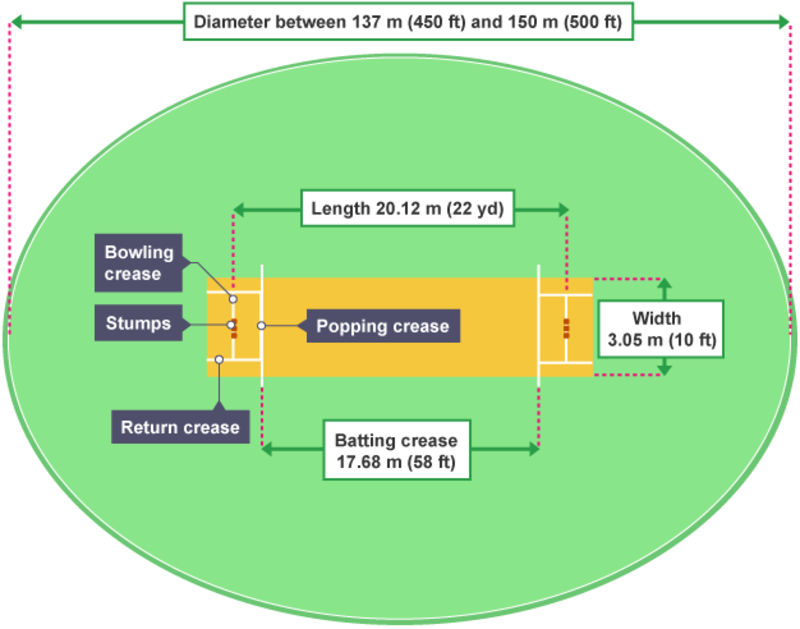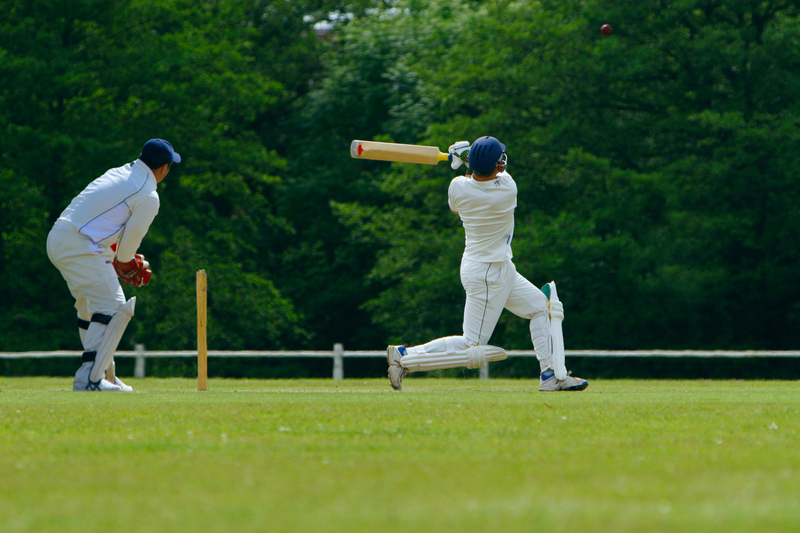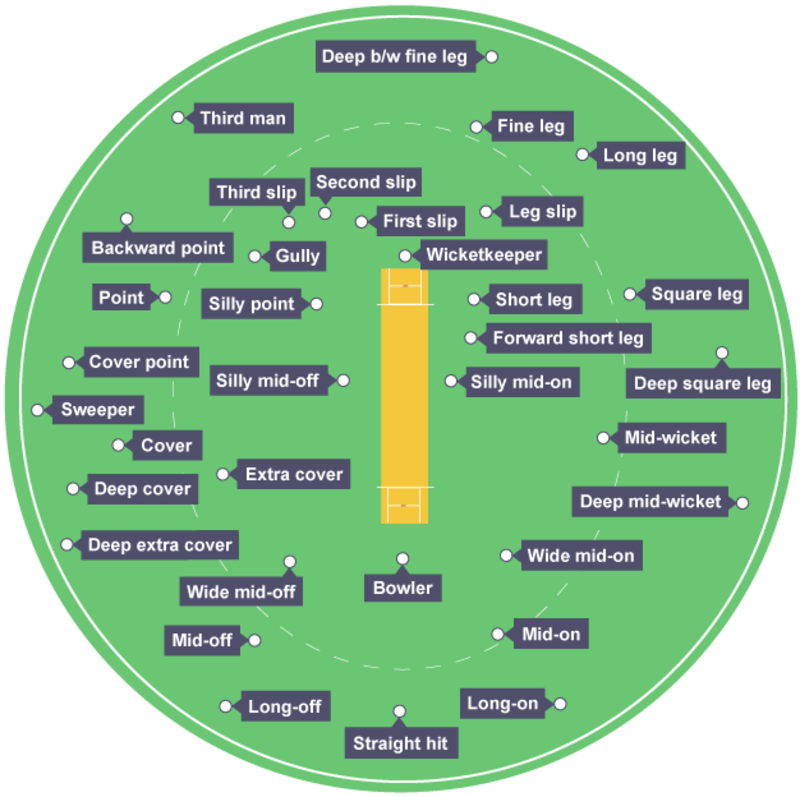Cricket for Beginners: A Comprehensive Guide to Cricket Rules and Laws, Scoring Runs and Taking Wickets
Are you curious about cricket but don't know where to start? Do you want to understand the basics of the sport so you can enjoy watching it with your friends or family? Look no further!
Cricket is a game loved and played by millions of people around the world. It is a sport that is known for its long history, unique jargon, and technicalities. This beginner's guide to cricket is here to help you understand the rules of the game, from scoring runs to taking wickets. With clear explanations and diagrams, you'll be ready to step up to the crease and take a swing in no time!
Cricket Basics
Before diving into the rules, let's go over some of the basics. Cricket is played with two teams of eleven players each. One team bats while the other team bowls and fields. The aim of the game is for the batting team to score as many runs as possible, while the bowling team tries to take wickets and restrict the runs scored.

The Cricket Pitch and Crease
The pitch is the rectangular area in the centre of the field where the bowler delivers the ball to the batsman. The pitch is 22 yards long and 10 feet wide. The crease is the line that marks the batsman's safe zone, and it consists of the popping crease and the batting crease. The popping crease is the line closest to the bowler, while the batting crease is the line closest to the batsman. If a bowler steps over the crease while delivering the ball, it is considered a no-ball and the batting team is awarded a run.
The pitch is divided into several different areas, each with its own specific purpose:
- The Bowling Crease - This is the line on either end of the pitch where the bowler starts his or her run-up before delivering the ball.
- The Popping Crease - A bowler must have part of their foot behind this line when the ball is delivered or the umpire will call 'no ball'. The popping crease is also used to determine whether a batsman is out of their ground when the wicketkeeper takes the bails off.
- The Batting Crease - This is the line that marks the batsman's safe zone, by having part of their foot behind this line when facing the bowler.
- The Wicket - This is a set of three wooden stumps that are placed at each end of the pitch, with two small bails balanced on top of them. Each stump has its own name and when viewed from the front, the left stump is called the off stump, middle stump and the right stump is called the leg stump. The objective of the bowler is to knock the bails off the stumps, while the batsman's objective is to defend their wicket and score runs.
Understanding the layout of the cricket pitch is essential for anyone looking to learn or play the sport. Knowing the different areas and their functions can help you to better appreciate the nuances of the game.

Scoring in Cricket
Cricket is a sport with a variety of ways to score runs. The most common way to score is by hitting the ball with the bat and running to the opposite end of the pitch, or “crease” as it’s known in cricket. Each time the batsman completes a run, one point is added to the team's score. There are also several other ways to score runs, including:
- Four runs: If the ball is hit to the boundary rope, four runs are awarded to the batting team.
- Six runs: If the ball is hit over the boundary rope, six runs are awarded.
- Extras: If the bowler delivers a no-ball or a wide ball, one run is added to the batting team's score. If the ball hits the batsman's body or equipment, the batting team is awarded runs called "leg byes" or "byes," respectively.

Wickets, Dismissals and LBW rules
In cricket, there are many ways to get out as a batsman, which are known as dismissals. The most common ways to get out are:
- Bowled: If the ball hits the stumps and dislodges the bails while the batsman is attempting a shot, the batsman is out.
- Caught: If the ball is hit in the air and caught by a fielder before it hits the ground, the batsman is out.
- LBW: If the ball hits the batsman's body in front of the stumps and the umpire deems that the ball would have gone on to hit the stumps, the batsman is out. This rule is known as LBW or leg-before-wicket.
- Run out: If the batsman fails to make his ground (the safe area of his crease) before the fielder dislodges the bails with the ball while the ball is still in play, the batsman is out.
- Stumped: If the batsman leaves his crease and the wicketkeeper dislodges the bails with the ball while the ball is still in play, the batsman is out.
Try Sportmember club software for Free - Create profile
Cricket Fielding Positions
The fielding team can set its players in a variety of positions on the field. Some of the common fielding positions are:
- Slip: Positioned behind the wicketkeeper, slips are used to catch the ball if the batsman edges it.
- Mid-off and Mid-on: Positioned on either side of the bowler, these players field the ball hit straight down the ground.
- Long-on and Long-off: Positioned at the boundary, these players field the ball hit over the bowler's head.
- Square leg and Fine leg: Positioned behind the batsman on either side, these players field the ball hit to the leg side.

Overs and Innings in Cricket
Cricket is played in overs, which are a set number of deliveries bowled by the same bowler. In professional cricket, each over consists of six deliveries, but in amateur games, it can vary. After one team has completed its innings, the other team takes its turn to bat and bowl. A game can consist of multiple innings, depending on the format of the game.
Types of Cricket
There are several formats of cricket played around the world. The most popular formats are:
- Test Cricket: Test cricket is the longest and oldest format of the game, played over five days with four innings. It is considered the ultimate test of skill and endurance.
- One-Day Cricket: In one-day cricket, each team gets 50 overs to bat and bowl. It is a faster-paced game than test cricket and is popular among fans for its exciting finishes.
- T20 Cricket: T20 cricket is the shortest format of the game, with each team getting 20 overs to bat and bowl. It is known for its explosive batting, and it has gained popularity around the world due to its fast-paced nature.
Who makes the laws of cricket - Governing bodies
Cricket is governed by a number of organizations at both the global and national levels. The International Cricket Council (ICC) is the global governing body for cricket. It was founded in 1909 and has 12 full members and 92 associate members. The ICC is responsible for organizing international tournaments such as the Cricket World Cup and the World Test Championship.
TIP: Read more about our Member management software
UK Cricket
In the UK, cricket is governed by the England and Wales Cricket Board (ECB), which was founded in 1997, Cricket Scotland, and Cricket Ireland. Cricket has a considerably lower profile in Scotland and Ireland, than in neighbouring England. The ECB is responsible for overseeing all levels of cricket in England and Wales, from the national team to grassroots cricket. It is also responsible for organizing domestic tournaments such as the County Championship and the T20 Blast.
The ECB works closely with other governing bodies in the UK, such as Cricket Scotland, Cricket Wales, and Cricket Ireland, to promote and develop the sport across the country. It also works with schools and clubs to encourage more people to take up cricket and to provide opportunities for young players to develop their skills.
In addition to the global and national governing bodies, there are also a number of regional and local cricket associations that are responsible for organizing cricket at the community level. These associations are often run by volunteers and play an important role in developing the sport and fostering a love of cricket at the grassroots level.
Cricket's Popularity
Cricket is a hugely popular sport around the world, with an estimated 2.5 billion fans globally. It is especially popular in countries such as India, Pakistan, Sri Lanka, Bangladesh, Australia, England, and South Africa, where it is considered one of the national sports.
In the UK, cricket has a long and rich history, with evidence of cricket being played as far back as the 16th century. It is widely regarded as the national summer sport and is a much-loved part of British culture. According to statistics from the England and Wales Cricket Board (ECB), there are over 4,000 cricket clubs in the UK, with more than 900,000 people playing the sport at various levels. The popularity of cricket is further evidenced by the large number of spectators who attend matches, including international tournaments such as the Ashes, which is played between England and Australia.
Cricket is also played at schools and universities across the UK, with many top universities having their own cricket teams. In addition, there are a number of amateur and semi-professional leagues that provide opportunities for players of all abilities to participate in the sport.
Overall, cricket is a hugely popular and well-loved sport around the world, with a rich history and a bright future. Whether you're a fan of the game or a newcomer looking to learn more, there's no denying that cricket has something to offer everyone.
Is Cricket for you?
Cricket is a sport with a rich history and a complex set of rules. While it may seem intimidating at first, it is a game that can be enjoyed by players of all ages and skill levels. If you're interested in getting involved in cricket, you can contact your local cricket association or club to find out more about the opportunities available in your area. Whether you're a seasoned player or a complete beginner, there's sure to be a team or league that's right for you.
Cricket and SportMember
We hope this beginner's guide has helped you understand the basics of cricket and inspired you to pick up a bat and ball and give it a try. Remember, the key to becoming a good cricketer is practice, so get out there and start playing!
The full overview and laws of the game can be found on the ICC website. There are thousands of cricket clubs in the UK, and many of them are using a club management system, like Sportmember, to streamline their club admin and help save time running their club.
SportMember allows you to gather all the club's functions in one place; member database, calendar and event planning, attendance, membership fees collection, and so much more (including a fully integrated and free website).
Creating a club profile on SportMember will help you run and structure the club, and save you a lot of time on otherwise manual tasks. Try it out by clicking "Create profile" below.